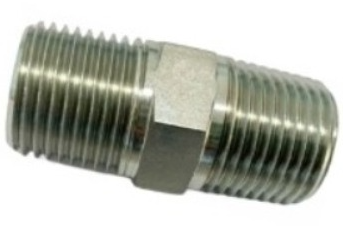NPT (National Pipe Thread) threads play a pivotal role in fluid handling systems. Secure connections are crucial in these systems. It is essential to understand the nuances of NPT thread pressure ratings. This understanding is essential for optimal system performance.
NPT threads, known for their tapered design, are widely used in various industries. The taper creates a mechanical seal, ideal for applications requiring leak-resistant connections. Commonly found in plumbing, gas fittings, and aerospace components, NPT threads offer versatility.
Common Applications in Various Industries
NPT threads find extensive use in plumbing for connecting pipes and fittings securely. In the oil and gas industry, their reliability is harnessed for fluid transport. Aerospace applications leverage NPT threads for their strength and sealing capabilities.
The Significance of NPT Thread Pressure Ratings
The pressure rating of NPT threads is pivotal in selecting components for a system. It determines the amount of force the threads can withstand. This directly impacts system safety and performance.
Role in Selecting Suitable Components
Engineers must consider the pressure rating when choosing NPT threaded components. It ensures compatibility with the demands of the system. This prevents potential failures under high pressure.
Impact on System Safety and Performance
The pressure rating directly correlates with system safety. Choosing NPT threads with the right rating ensures the entire fluid handling system is reliable. It also ensures the system is long-lasting.
Understanding NPT Thread Standards
NPT threads adhere to specific standards. These are outlined by organizations like ANSI/ASME. The standards maintain consistency and quality.
NPT threads follow standardized dimensions and tolerances, ensuring uniformity across industries. Compliance with these standards is essential for seamless integration within complex systems.
The American National Standards Institute (ANSI) and the American Society of Mechanical Engineers (ASME) establish and uphold the standards for NPT threads. Adhering to these standards guarantees thread compatibility and interchangeability.
Decoding NPT Thread Pressure Ratings
To decipher NPT thread pressure ratings, you need to understand PSI (pounds per square inch) and BAR (barometric pressure) measurements.
The PSI rating indicates the maximum pressure the NPT threads can endure. It offers a quantitative measure of their strength. BAR, a metric unit, provides an alternative measure for international compatibility.
The size of NPT threads is specified by their nominal diameter. This significantly influences their pressure-handling capabilities. Larger threads generally boast higher pressure ratings, accommodating more demanding applications.
How much pressure can NPT thread withstand?
NPT threads can withstand varying levels of pressure. The levels depend on their size and material. Refer to the specifications and charts provided by manufacturers. Use them to determine the precise pressure limits.
Factors Influencing NPT Thread Pressure Ratings
Several factors influence the pressure ratings of NPT threads. These factors include temperature and material composition.
Temperature Considerations
Extreme temperatures can affect the material properties of NPT threads. This can influence their ability to withstand pressure. Engineers must account for temperature variations in system design.
Material Composition and Design Aspects
The material used in crafting NPT threads is often stainless steel or brass. This material contributes to their overall strength and resilience. Additionally, the design aspects, including thread classes and schedules, play a crucial role.
NPT Thread Classes and Schedules
Understanding the classification system for NPT threads involves recognizing different classes and schedules.
Overview of Different Classes and Schedules
NPT threads come in various classes and schedules. Each denotes specific tolerances and applications. NPT thread classifications help users choose threads suitable for their intended purpose.
How to Interpret NPT Thread Classifications
Interpreting NPT thread classifications involves recognizing differences in tolerances. It also provides insight into their performance under different conditions.
Comparing NPT Threads to Other Thread Types
Comparing NPT threads to alternatives like BSP threads provides insights into their advantages and limitations.
NPT vs. BSP Threads
NPT and BSP threads share similarities, such as taper design. However, they differ in dimensions and applications. Understanding these distinctions aids in selecting the appropriate thread type.
Advantages and Limitations of NPT Threads
Recognizing the strengths and weaknesses of NPT threads informs engineers and users. It helps them understand the best ways to use NPT threads in different situations.
Thread Sealing Techniques for NPT Threads
Ensuring proper sealing is crucial for preventing leaks and maintaining system integrity.
Importance of Proper Sealing
Proper sealing techniques, such as using thread sealants and tape, help make connections leak-free. They also improve system reliability.
Conclusion and Key Takeaways
Summarizing the insights into NPT thread pressure ratings highlights the critical role they play. It ensures the integrity and safety of fluid handling systems.
NPT threads have a tapered design and standardized classifications. They are integral components in diverse industries. It is essential to understand their pressure ratings. Also, their material considerations and proper installation techniques. This will optimize system performance.
Post time: Feb-02-2024


